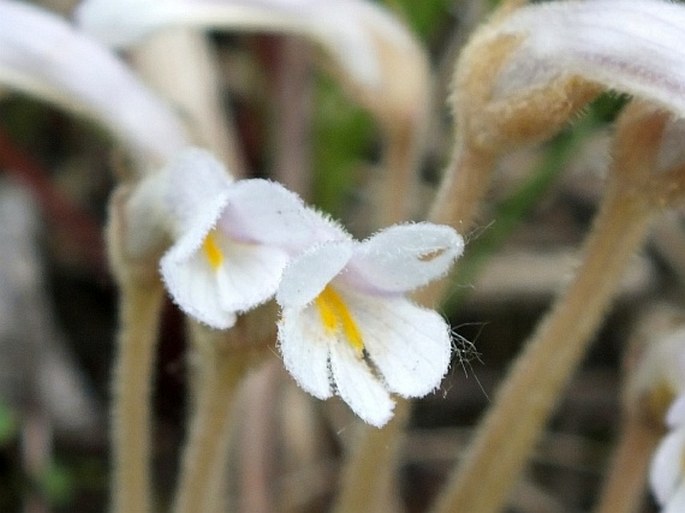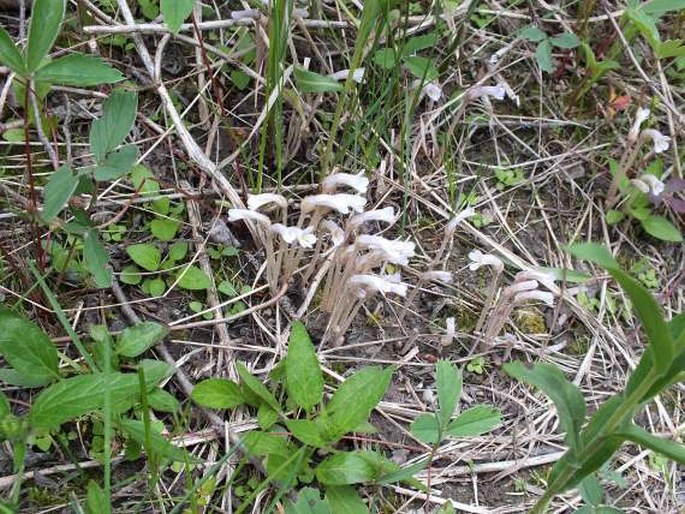Syn.: Anoplanthus uniflorus (L.) Endl., Aphyllon uniflorum (L.) Torr. et A. Gray, Thalesia uniflora (L.) Britton
Family: Orobanchaceae Vent.

Distribution: Occurs in major part of North America, from Alaska to Baja California, from Atlantic to Pacific, less so in prairie areas and south east of US and it is absent in dry and desert areas. Besides the nominate species, 3 infraspecific taxa are recognized – Orobanche uniflora f. inundata, O. u. var. minuta a O. u. var. sedi.
Ecology: Open forests and their margins, rocky slopes, moist meadows and along roads, at elevations 0–3000 m. Blooms from April to July.

Description: Parasitic herb without chlorophyll, annual, 5–15 cm tall, from short rhizome. Pedicel erect, sometimes up to 3-times branched from the base, however usually solitary (uniflora). Leaves reduced to one small scale-like bract at the base of the pedicel. Pedicel and calyx are whitish to pinkish. Flowers 2–3 cm long, pentamerous, tubular, 2 lobes at the top and 3 at the bottom, calyx with tube bending to one side, whitish or purplish, with vivid yellow anthers. All parts of the plant are glandular-pubescent, including flower. Fruit is an erect capsule with numerous tiny seeds.
Host: It parasitizes roots of Asteraceae (ie. Rudbeckia and Solidago), Saxifragaceae and Crassulaceae (Sedum).
Possible confusion: In the west of North America it can be confused with another parasitic plant, Orobanche fasciculata, which flowers are not solitary and the colour of the flower is different, usually pinkish or yellowish and it is found on Artemisia.



These images were taken in Canada, Alberta, Calgary, Griffith Woods Park (June 21, 2015).


